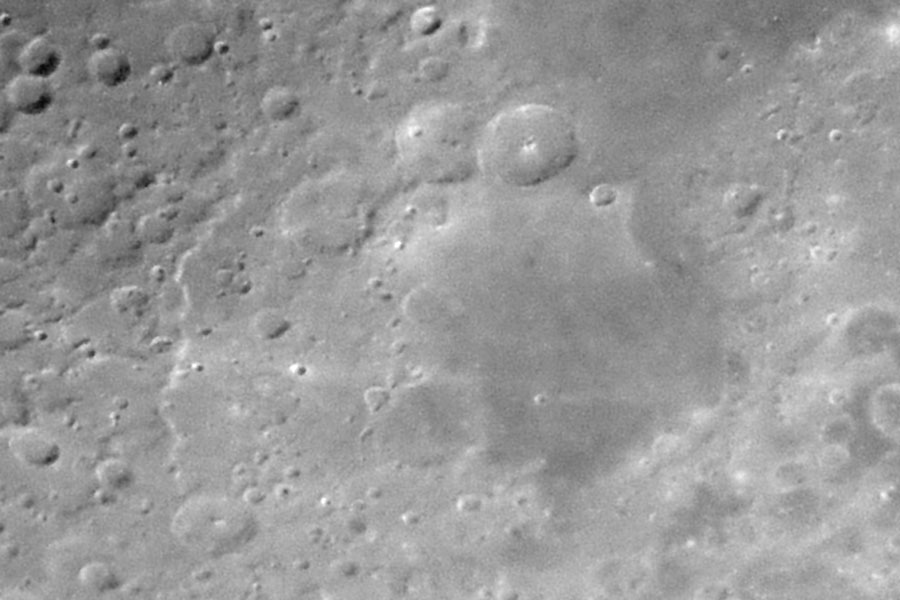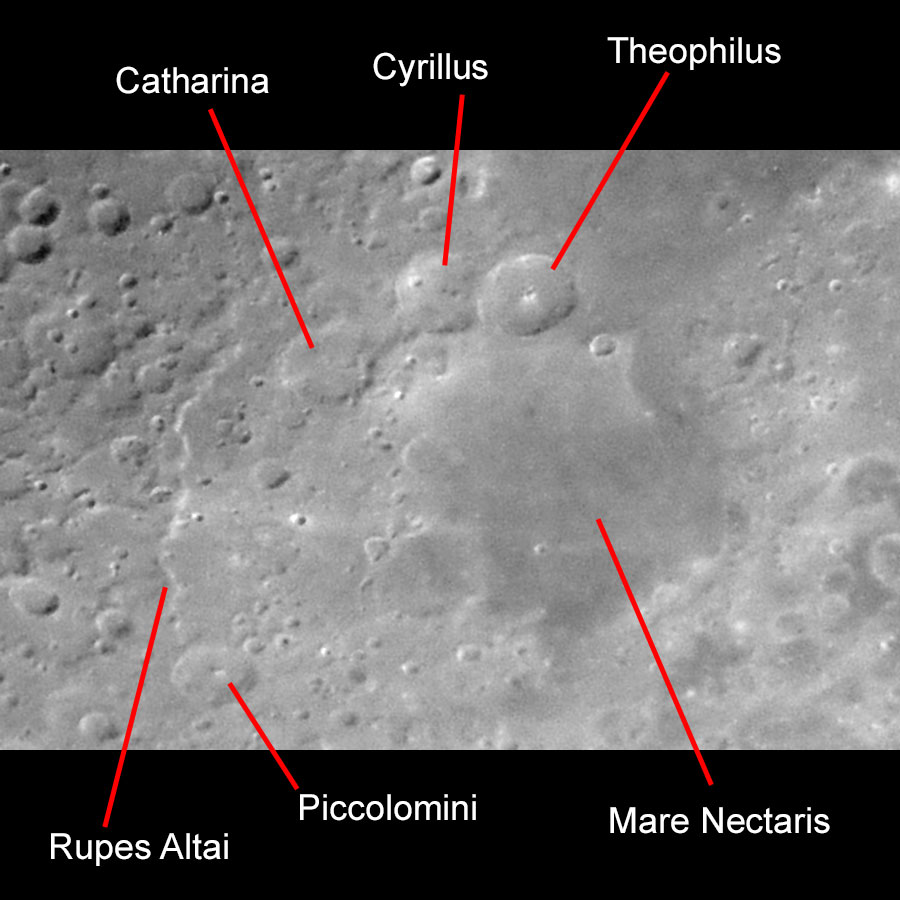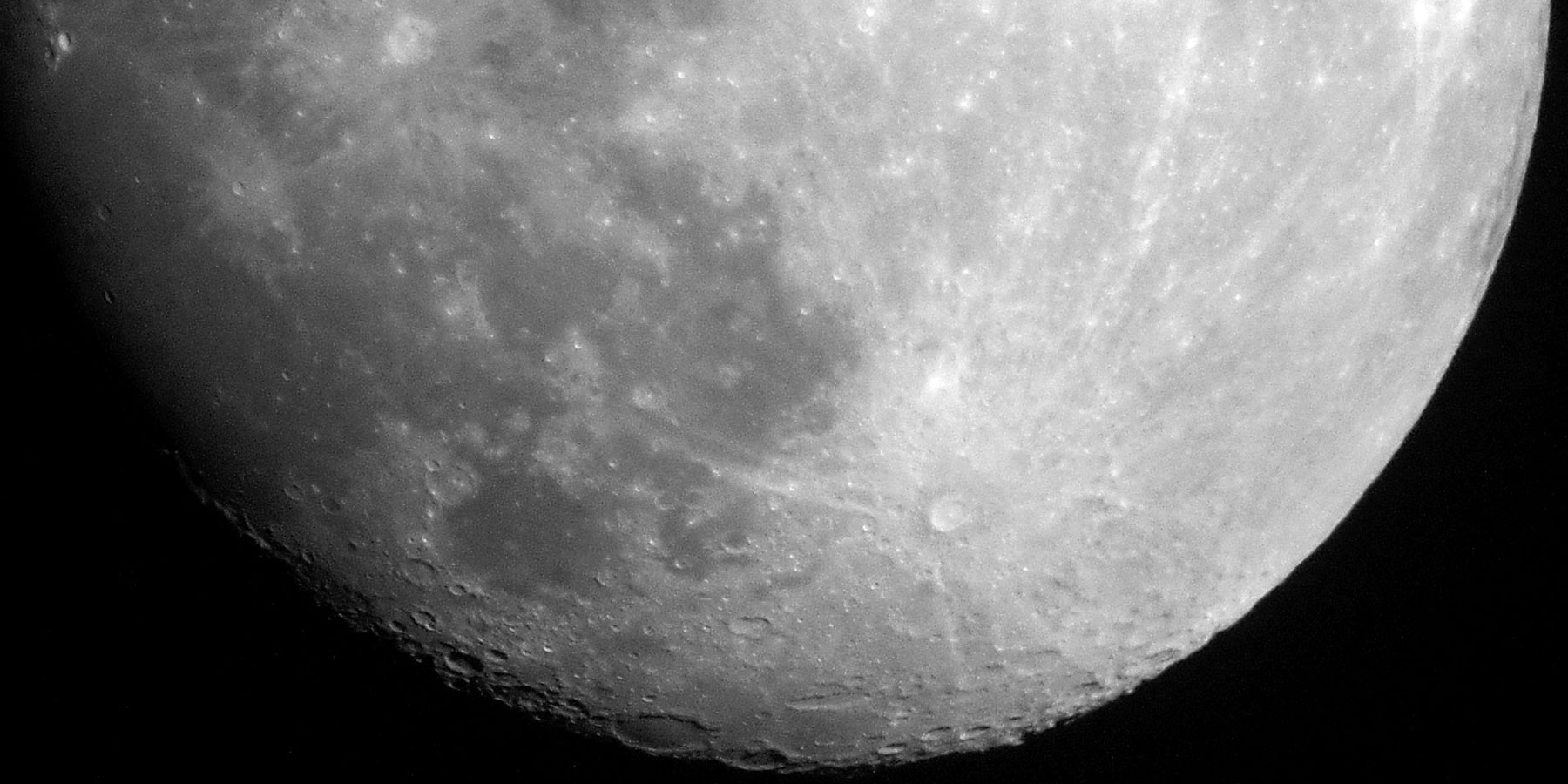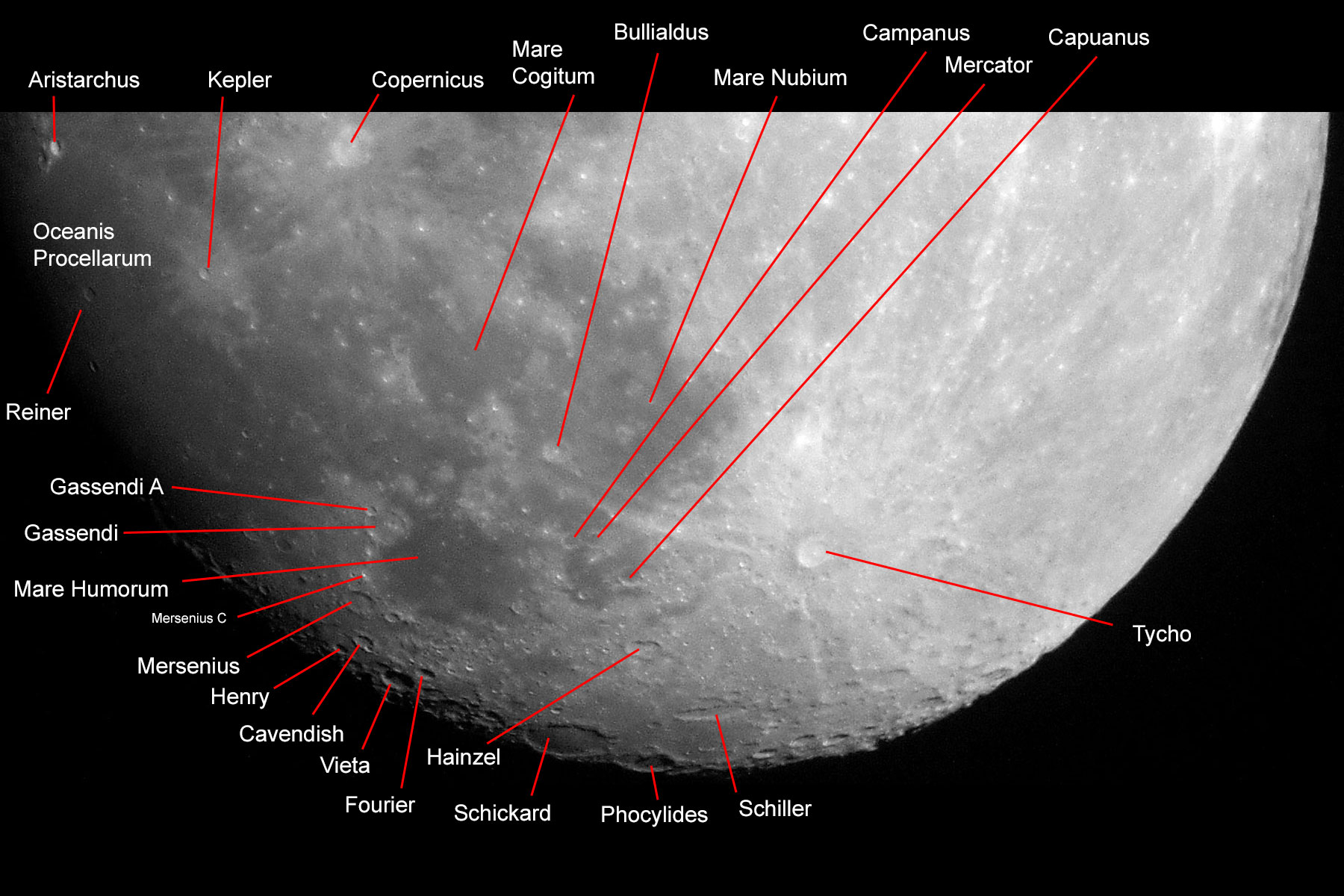Walking the Moon with my own Photos - Moon Landscapes Part 2
Introduction | Large Craters | Craters, Ring Mountains | Vallis | Rupes, Rimae | Dorsa | Other... | References
On these pages I do "moon walks" on the basis of my own photos. In other words, I try to name the objects on my lunar photos to get to know the moon better. Maybe these pages will help others to get to know the moon better as well...
On this and another page, I present landscapes on the moon, surface elements (maria, craters, mountains), or combinations of these. Some of the photos are repeated because they contain several interesting objects. I hope to be able to replace the photos with better ones in the course of time...
See also page Moon Landscapes - Part 1 - Back to the overview of my "moon walks".
Introduction
On this page and on a second one, I present landscapes on the moon, surface elements (maria, craters, mountains), or combinations of these. The photos are rotated by 180 degrees or mirrored so that they correspond to the normal visual impression, but they are often somewhat skewed.
See also Moon Landscapes - Part 1.
Note: For space reasons, the description of the elements of the moon surface can be found on page Walking the Moon with my own Photos - Overview.
Large Craters (Wall/Walled Plains)
Wall(ed) plains are large craters with diameters between 100 and 300 km. I therefore call them usually craters as well... The wall is usually already decayed or covered by later impacts, and the bottom is flooded with lava.
Plato and Archimedes
The wall plain Plato is 100 km in diameter. The wall plain Archimedes is smaller and has a diameter of about 80 km. On the following photo, Plato was illuminated by the sun on February 23, 2018 (Half Moon at shortly after 9 a.m.).
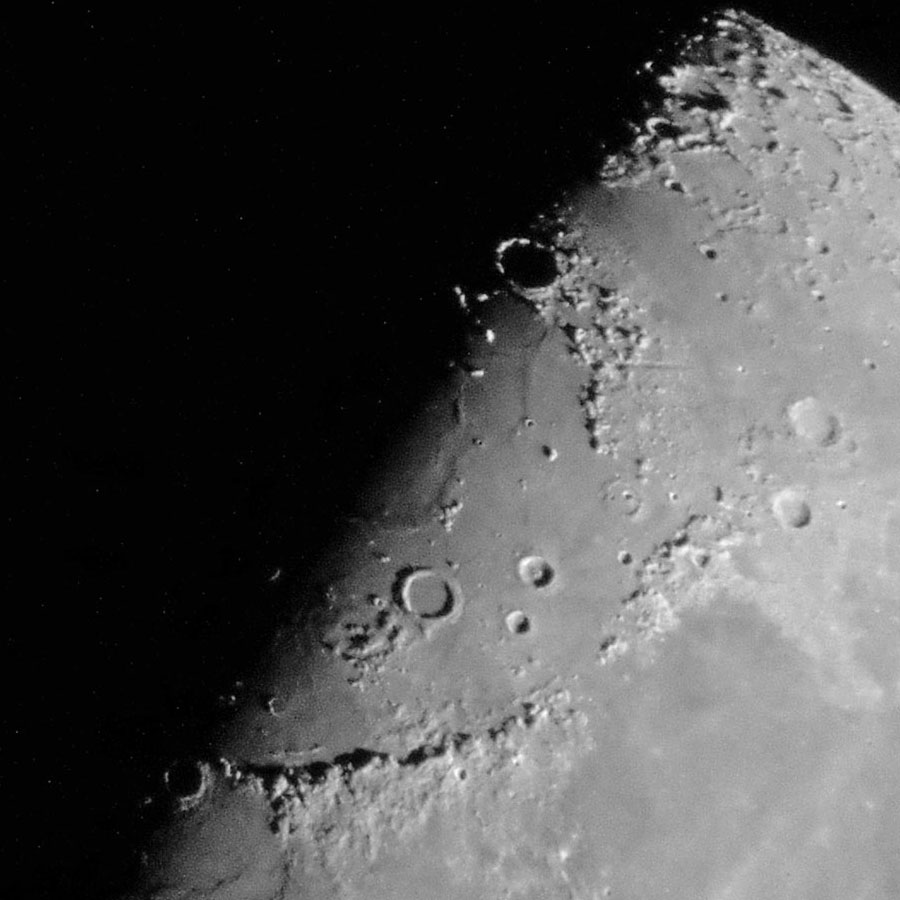 |
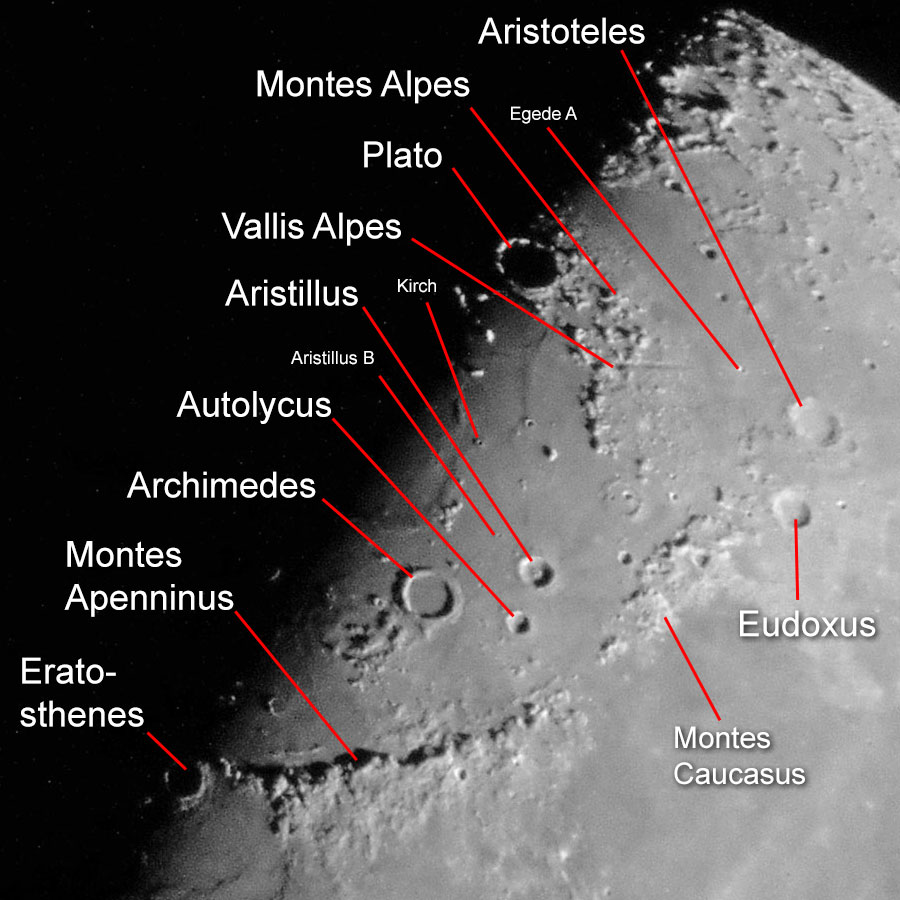 |
Photo data: February 23, 2018, Sky-Watcher Skymax-102 OTA, Ricoh GR held to the eyepiece
Here are two photos with Plato and Archimedes, where Plato is once again close to the terminator:
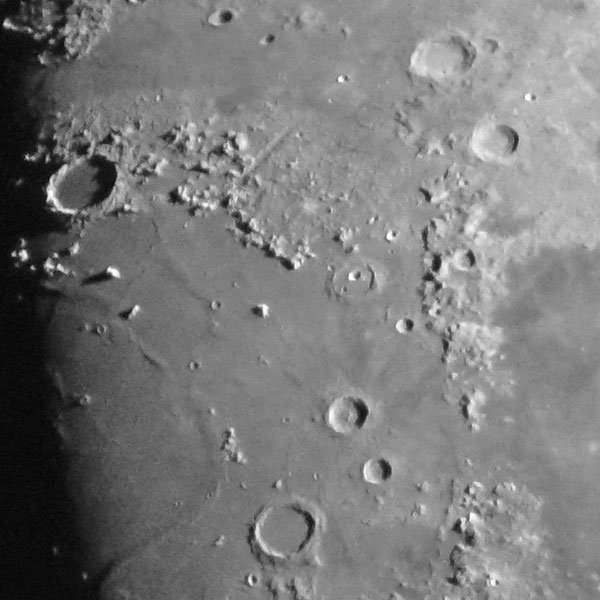 |
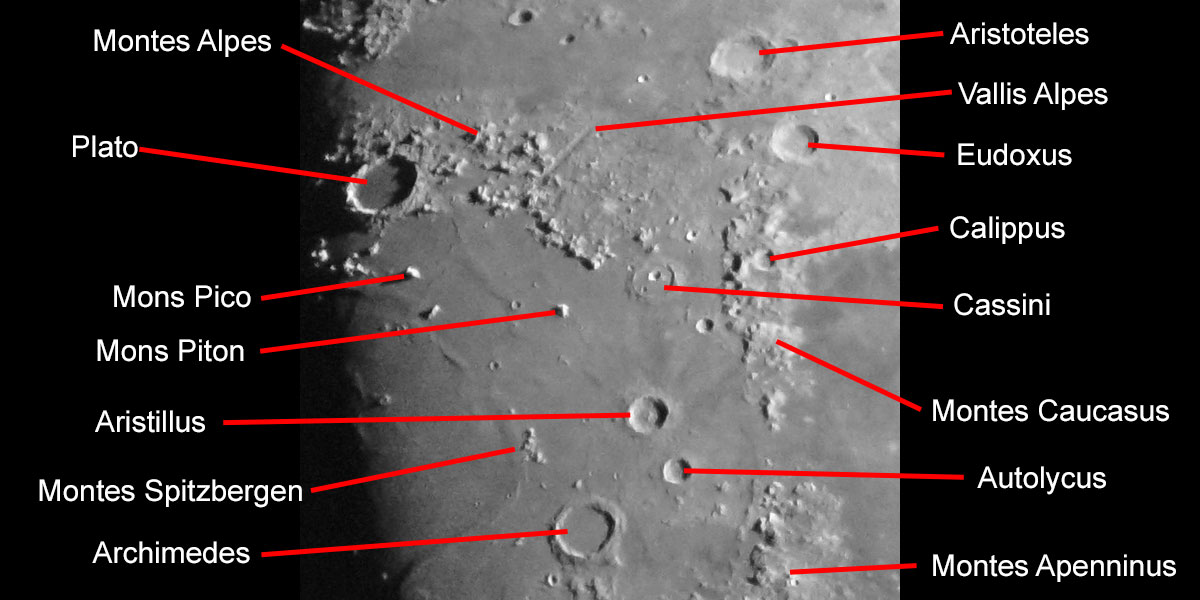 |
|
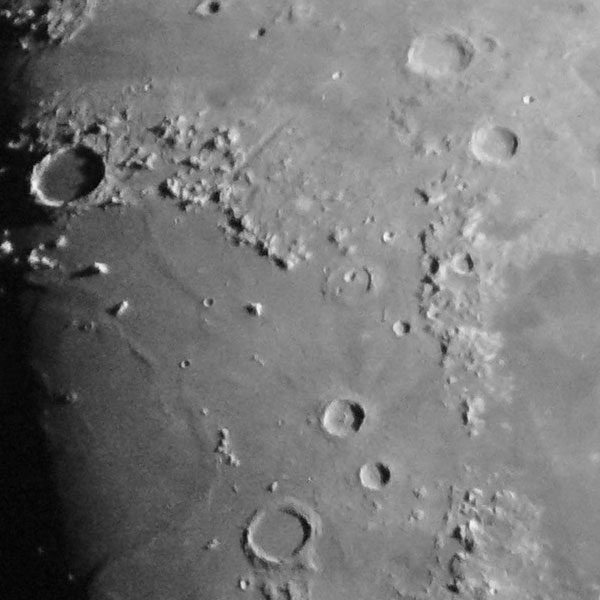 |
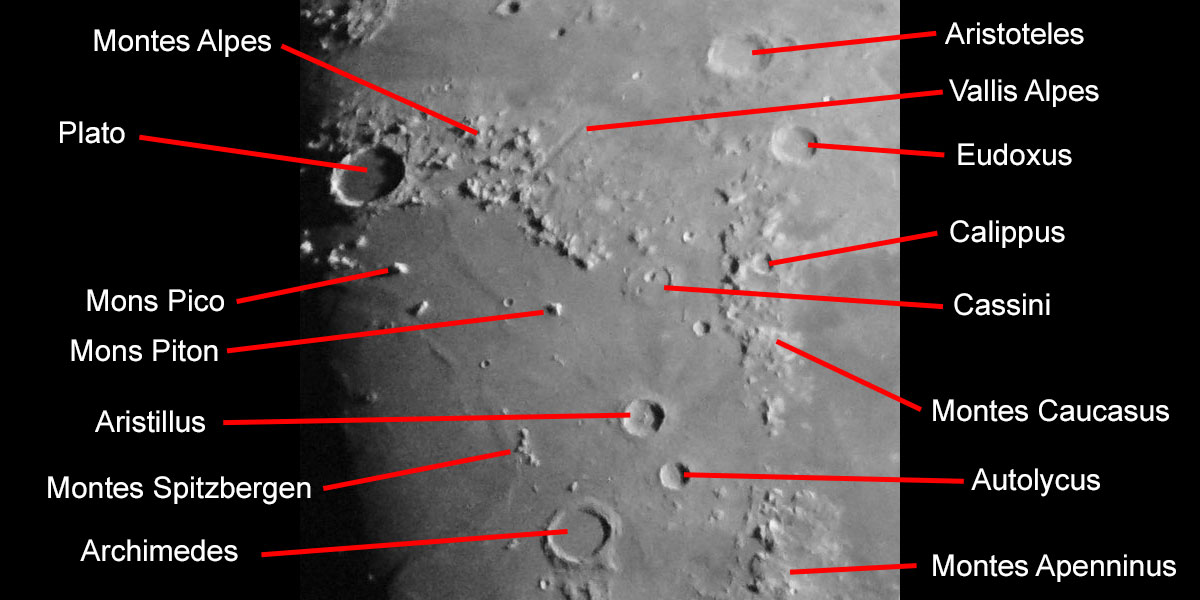 |
Photo data: March 25, 2018, Sky-Watcher Skymax-127 OTA, Sony RX100 M4 attached to the eyepiece
Craters, Ring Mountains
Craters, small craters, and ring mountains are distinguished as follows:
- Craters in the true sense of the word are about 5-60 km in diameter. They are usually round in shape and stand out clearly from the ground. The inner wall is smooth and there is no central mountain. Small craters up to 5 km in diameter are called small craters.
- With a diameter of 20-100 km, the ring mountains also have a well preserved and clearly defined wall. The inner slopes are typically terraced, and a central mountain rises above the ground.
Beside showing the wall plains Plato and Archimedes, the the previous two photos also show a number of craters and ring mountains:
- Craters: Calippus, Cassini
- Ring mountains: Aristoteles, Aristillus, Autolycus, Eudoxus
There are also a number of unnamed small craters on the photos.
 |
 |
|
 |
 |
Photo data: March 25, 2018, Sky-Watcher Skymax-127 OTA, Sony RX100 M4 attached to the eyepiece
The following photos show craters and ring mountains that are located further south:
- Craters: Parry, Thebit*, Nicollet, Birt, Bonpland, Werner
- Ring mountains: Albategnius, Arzachel, Bullialdus, Pitatus*, Purbach, Regiomontanus, Walther
Wall plains are: Alphonsus, Ptolemaeus. For some craters/ring mountains I made a preliminary assignment, because I was not able to find the needed information. Please do not take these assignments too seriously, in case of doubt, these are all craters...
*) In Spix's Moonhopper designated as wall(ed) plains.
 |
 |
|
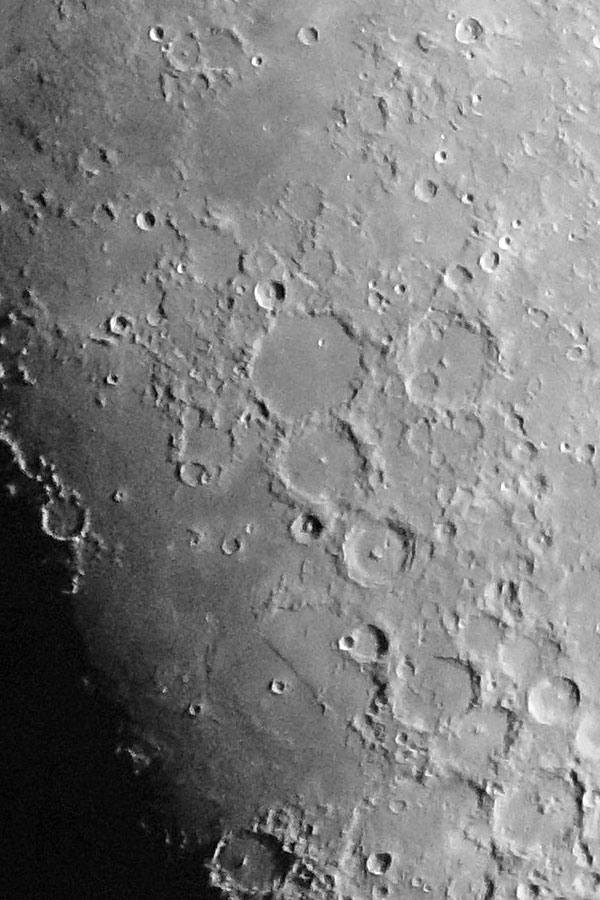 |
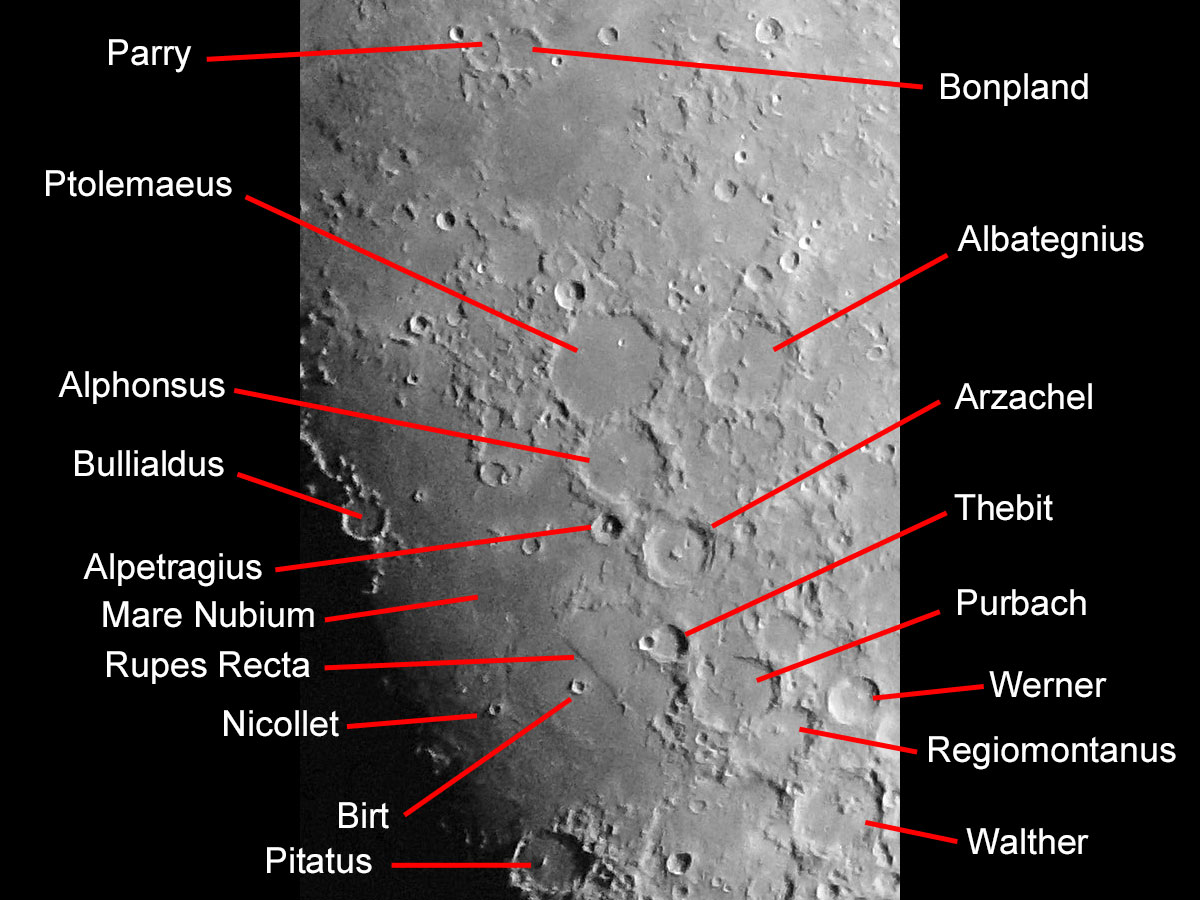 |
Photo data: March 25, 2018, Sky-Watcher Skymax-127 OTA, Sony RX100 M4 attached to the eyepiece
The next photos show once again craters and ring mountains that are located further south but are located to the right of the previous one:
- Craters: Isodorus, Capella, Gutenberg, Glocenius, Santbech
- Ring mountains: Theophilus, Cyrillus, Catharina, Piccolomini
Wall(ed) plains are: Fracastorius? For some craters/ring mountains I made a preliminary assignment, because I was not able to find the needed information. Please do not take these assignments too seriously. In case of doubt, these are all craters...
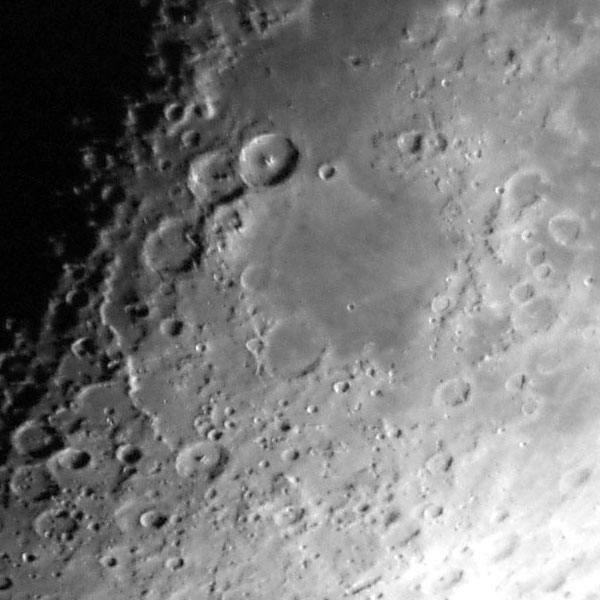 |
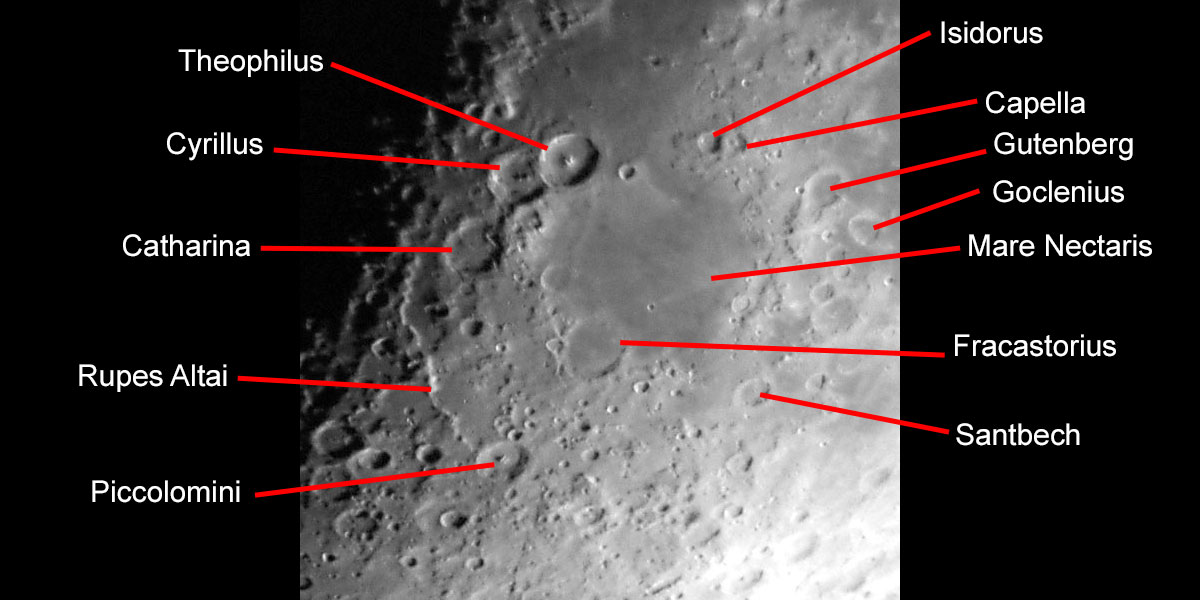 |
|
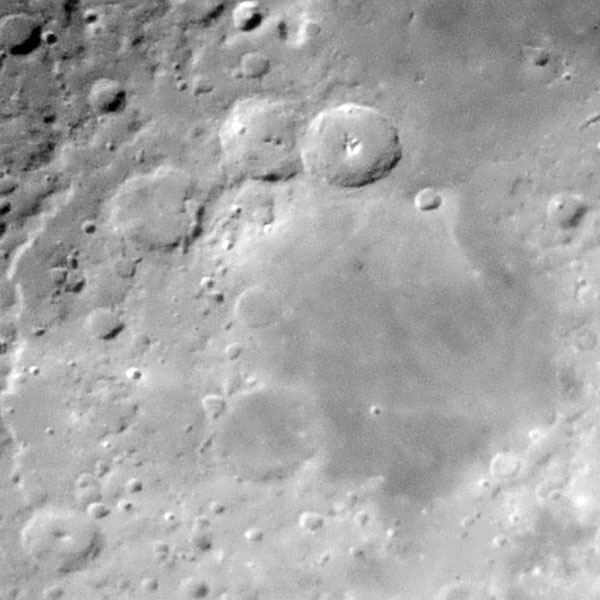 |
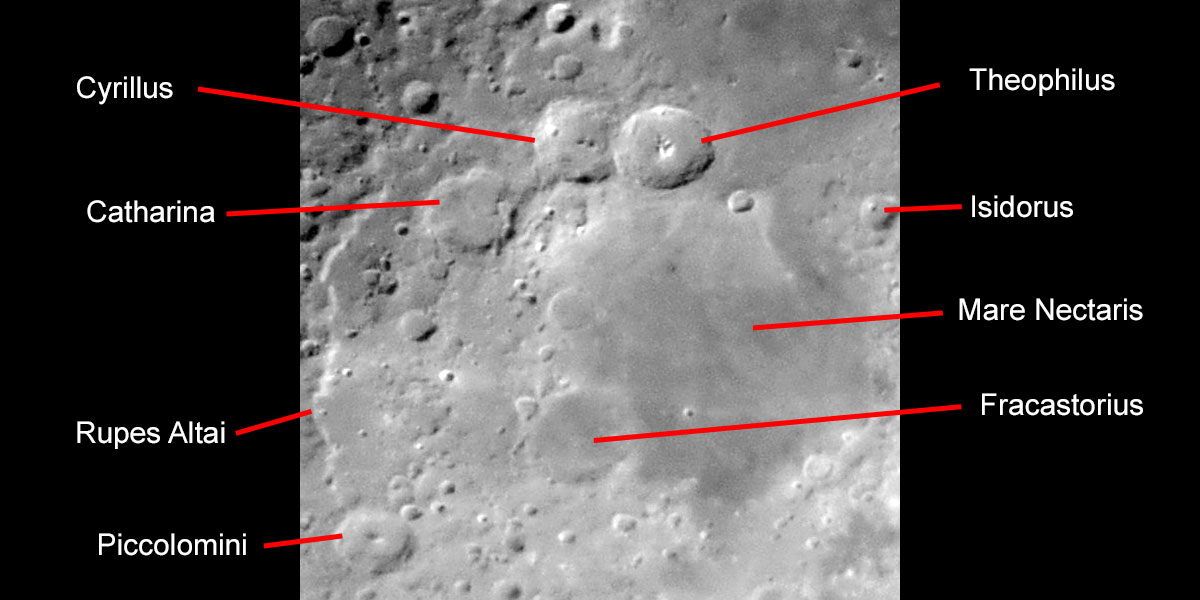 |
Photo data: April 2-3, 2017, Sky-Watcher Explorer 150PDS, Ricoh GR held to the 7 mm UWA eyepiece
Vallis (Valleys)
Valleys (lat. Vallis) are divided into three types according to their different history:
- Crater valleys: Craters, ring mountains and wall plains are most common on the moon. Crater valleys are linear formations of overlapping impacts. These probably originated from secondary impacts during the formation of the great seas.
- Lava valleys resemble earthly rivers in appearance, have a twisted form and are collapsed former lava rivers.
- Collapse valleys are caused by subsidence or collapse of the underlying rock layers.
Vallis Alpes
The Vallis Alpes is a collapse valley.
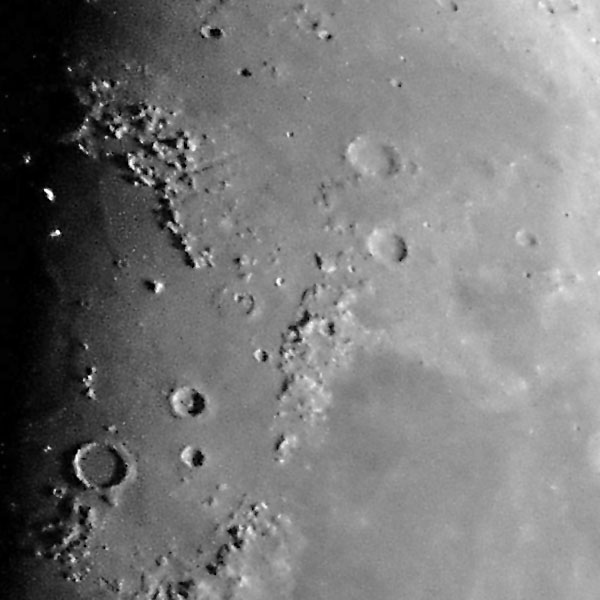 |
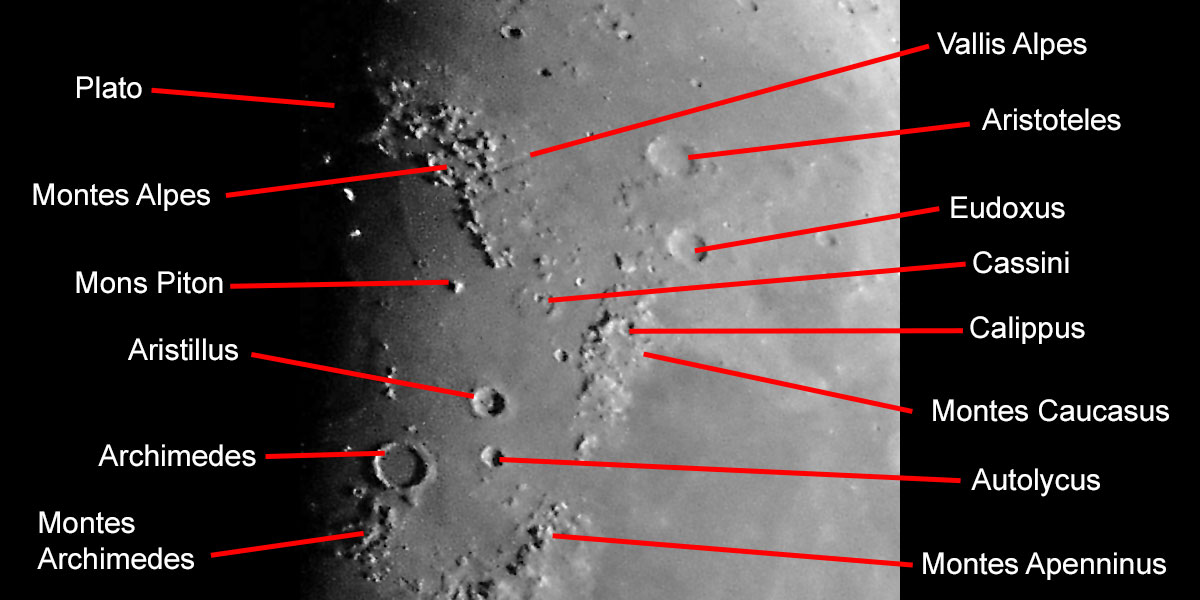 |
|
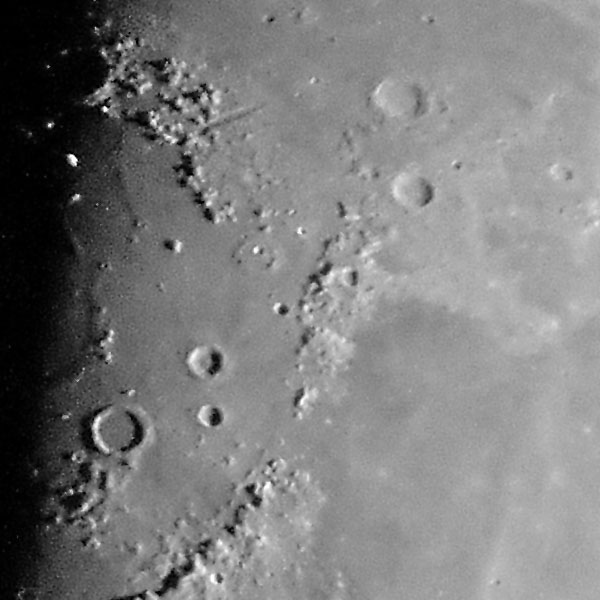 |
 |
Photo data: March 24, 2018, Sky-Watcher Explorer 150PDS, Ricoh GR held to the eyepiece
 |
 |
|
 |
 |
Photo data: March 25, 2018, Sky-Watcher Skymax-127 OTA, Sony RX100 M4 attached to the eyepiece
Vallis Schröteri (Schröter Valley)
The bended Vallis Schröteri is the largest lava valley on the moon.
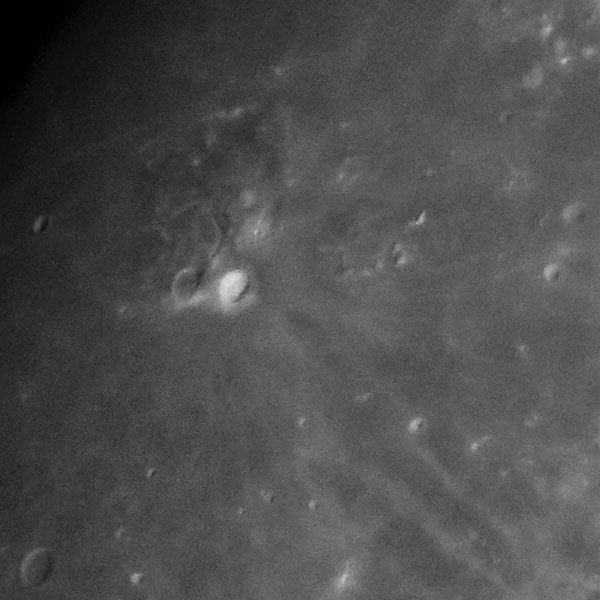 |
 |
 |
||
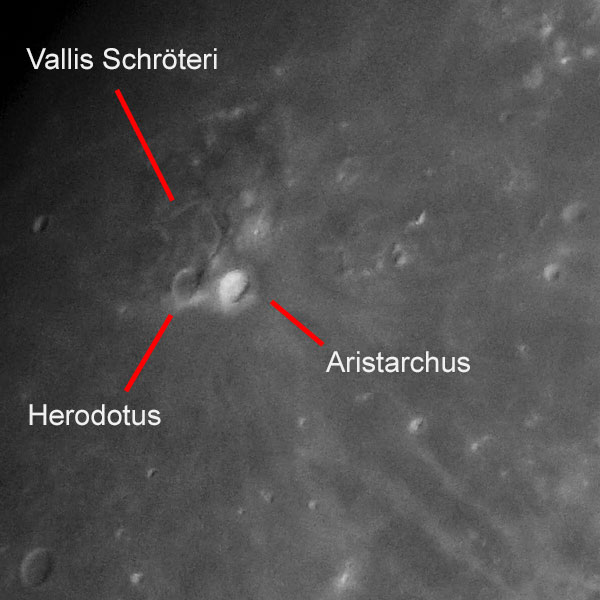 |
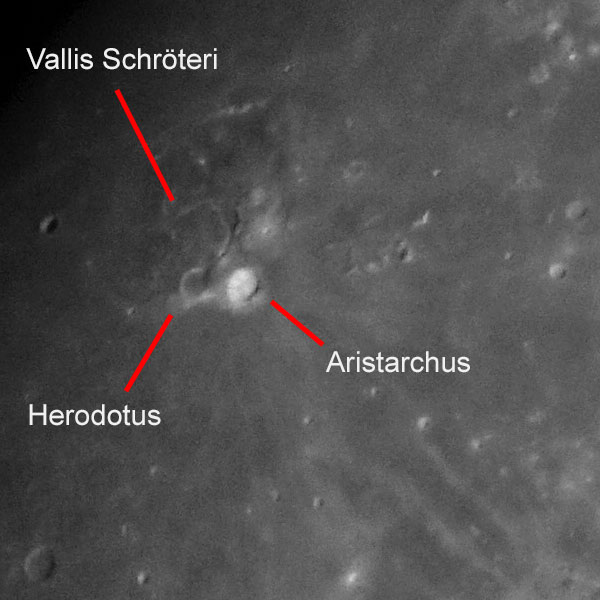 |
 |
Photo data: November 20, 2018, Omegon PS 72/432 refractor on Sky-Watcher AZ Pronto mount, Sony RX100 M4 attached to the 32 mm eyepiece, 3 x focal extender
Rupes, Rimae (Grooves, ...)
Rupes are either terraces as a result of subsidence in the marginal zones of the seas or remains of ring mountains or crater segments.
Rupes Altai
The Rupes Altai are terraces as a result of subsidence in the marginal zones of Mare Nectaris.
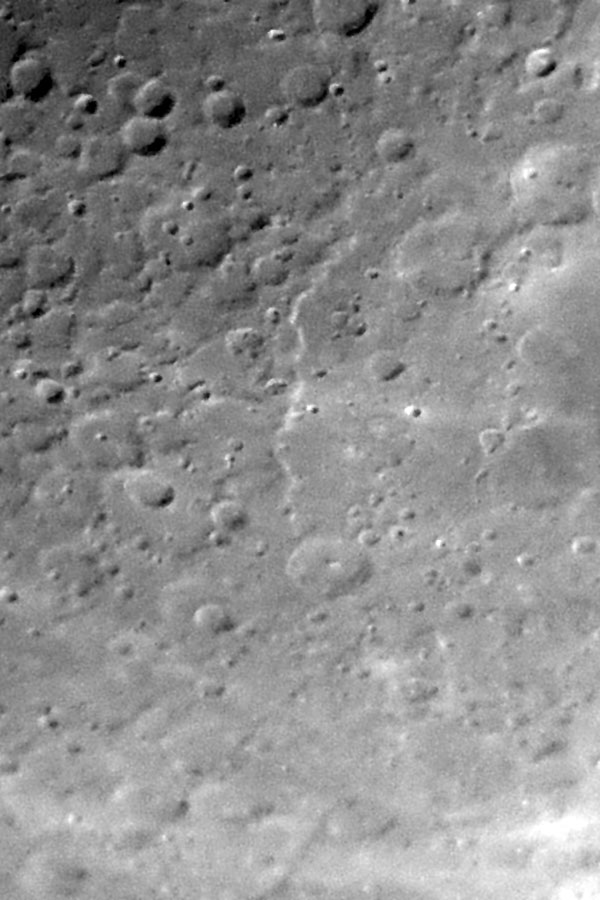 |
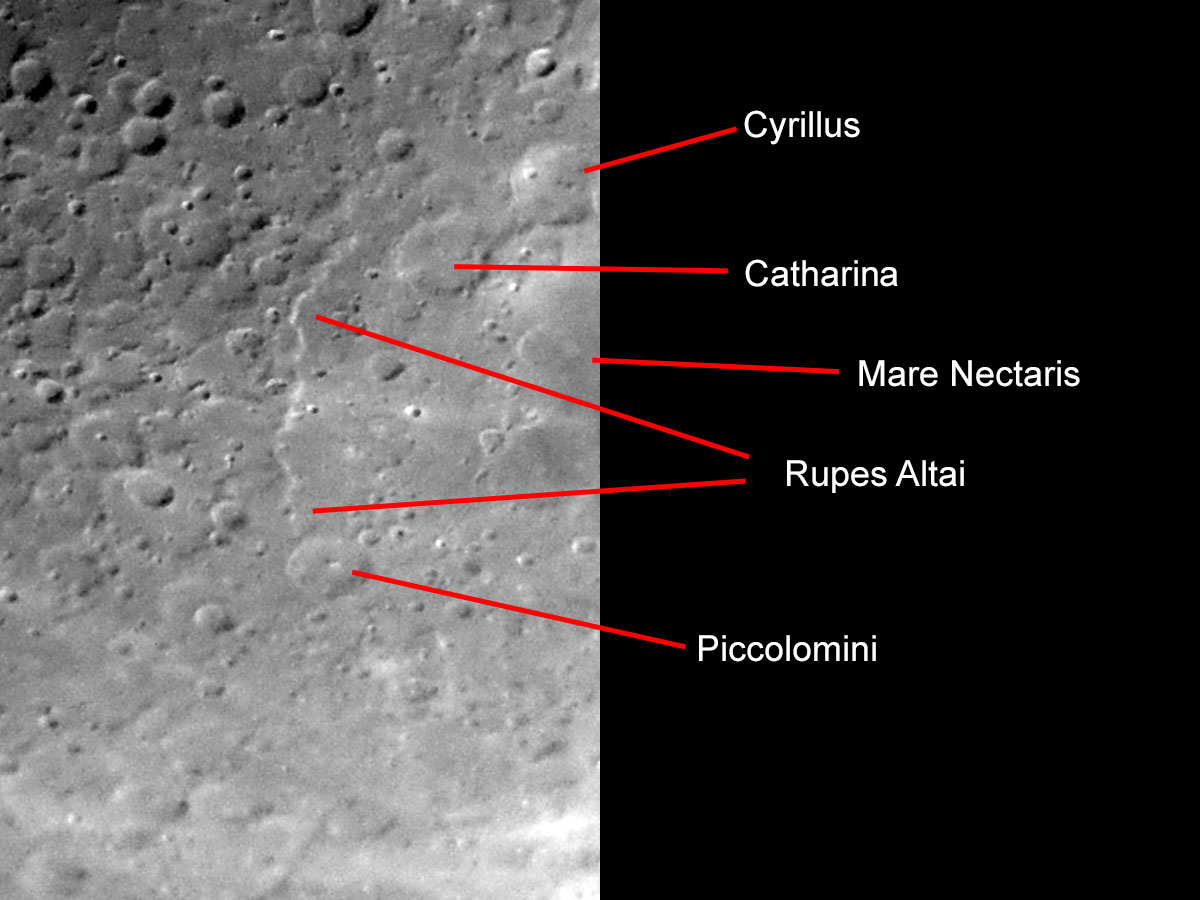 |
And here the Rupes Altai once more with some surround:
Photo data: March 24, 2018 (Half Moon), Sky-Watcher Eyplorer 150PDS, Ricoh GR held to the eyepiece.
Rupes Recta (Straight Wall)
Rupes Recta is a linear fault on the moon, in the southeastern part of the Mare Nubium. It can already be clearly seen in small telescopes in the grazing light of the Half Moon thanks to its shadow cast. It is 115 km long and 500 m high (Spix).
 |
 |
|
 |
 |
Photo data: March 25, 2018, Sky-Watcher Skymax-127 OTA, Sony RX100 M4 attached to the 32 mm-DigiScope eyepiece.
Rima Hyginus
Rima Hyginus (Hyginus Rille) with crater Hyginus (11 km in diameter) at the center was a little bit harder to find for me... Further rillae in that area are not visible on my photos, except for, with a very good will, Rima Ariadaeus...
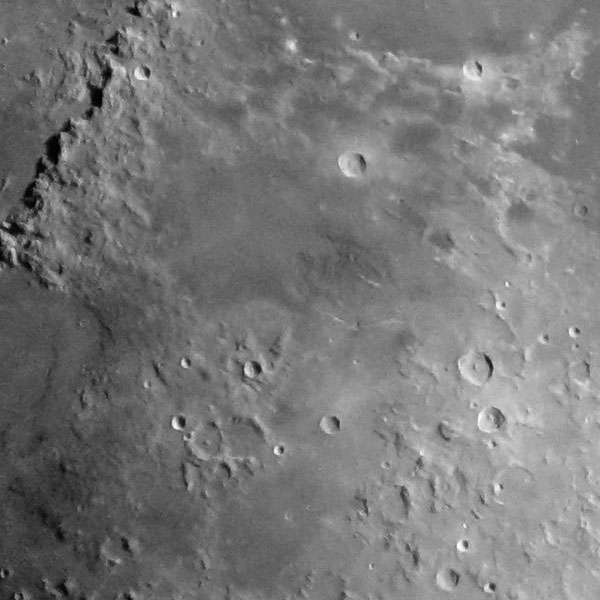 |
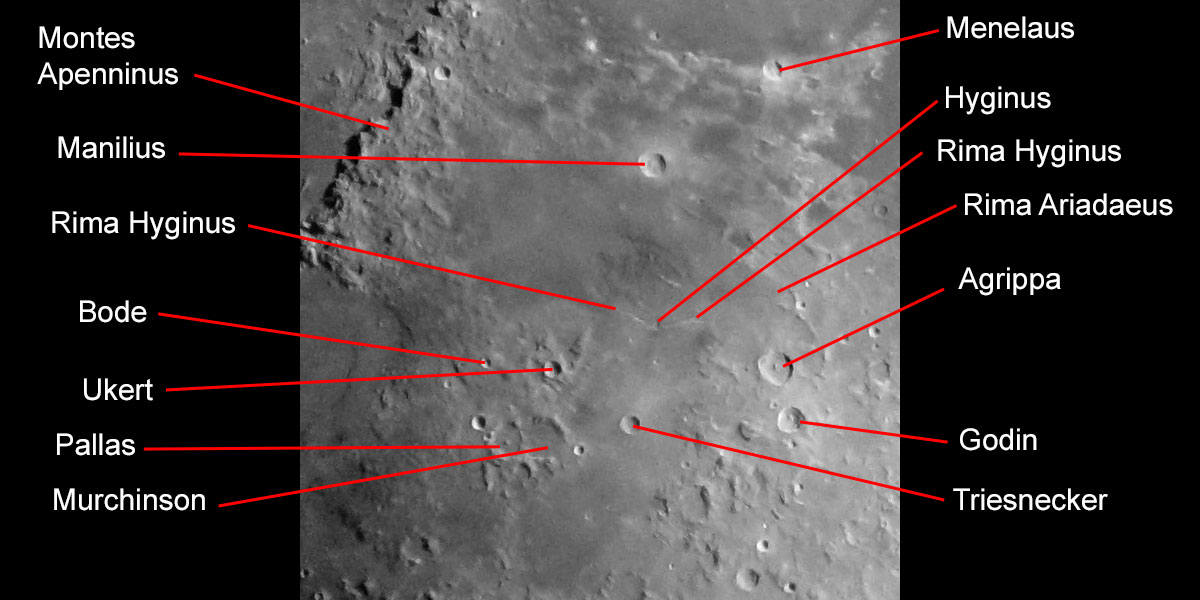 |
Photo data: March 25, 2018, Sky-Watcher Skymax-127 OTA, Sony RX100 M4 attached to the eyepiece
Dorsa (Sea Ridges, Sea Ridge Systems)
Dorsa, or (sea) ridges, are curved to linear very flat elevations (approx. 100 m) in seas and oceans. They mostly occur within complex systems of ridges.
Dorsum Oppel
Dorsum Oppel, that is the sea ridge Oppel, is located at the western edge of the Mare Crisium, is 300 km long and 100 m high.
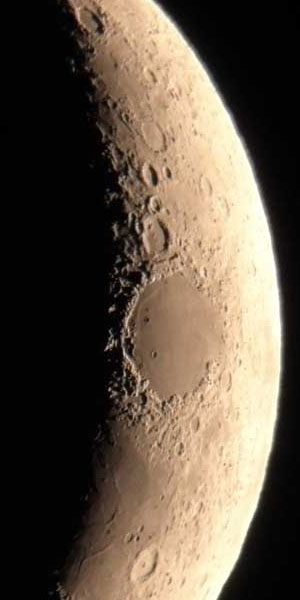 |
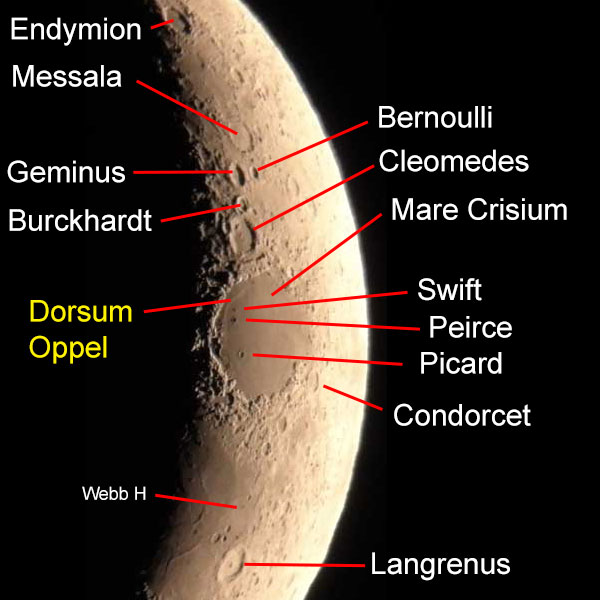 |
Photo data: April 10, 2016, GSO GSD 680 telescope, Leica X Vario mounted fix to 32 mm DigiScope eyepiece
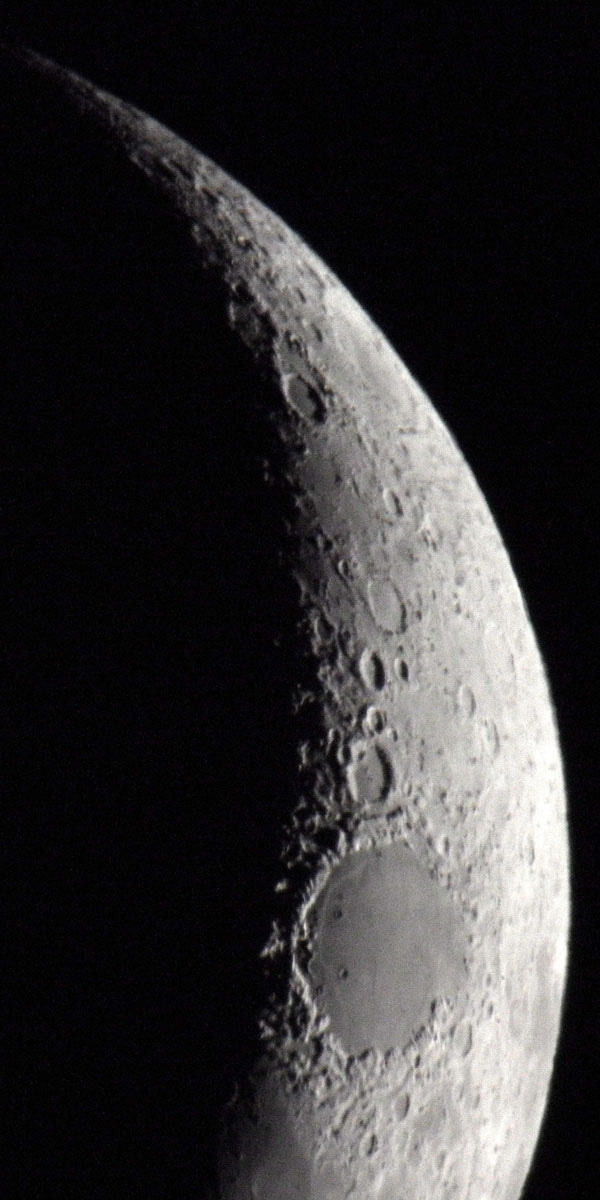 |
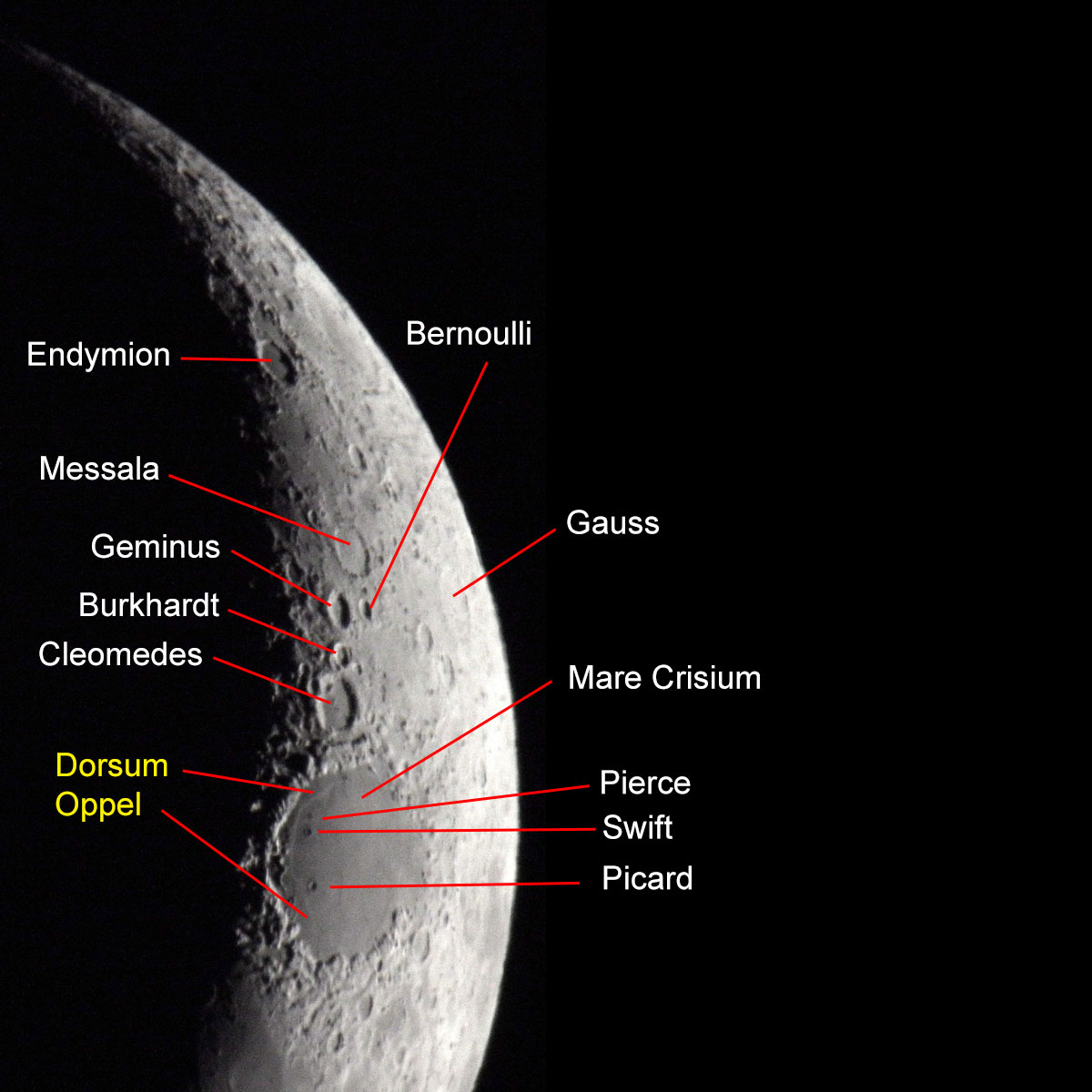 |
Photo data: April 10, 2016, GSO GSD 680 telescope, Leica X Vario held to the 16 mm UWA eyepiece
Other...
Ghost Craters
In astronomy, a ghost crater is an old impact crater whose crater wall is almost completely eroded by prolonged erosion and is only visible when the sun is very flat (translated from Wikipedia). The crater Wallace at the eastern edge of the Mare Imbrium (Sea of Rain) is an example of a ghost crater.
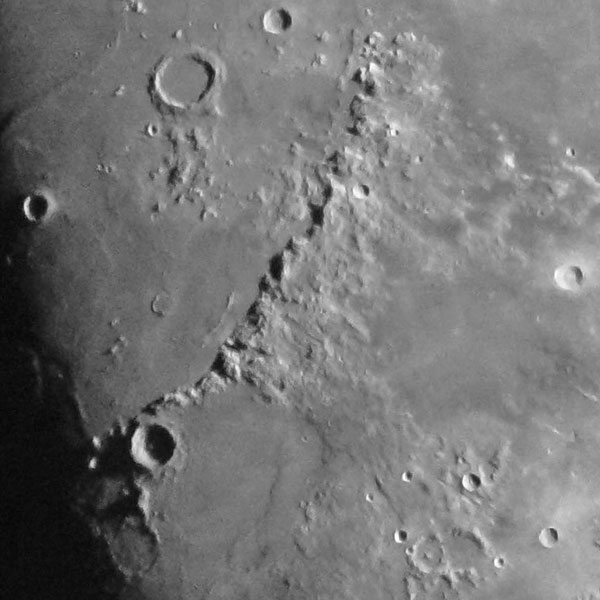 |
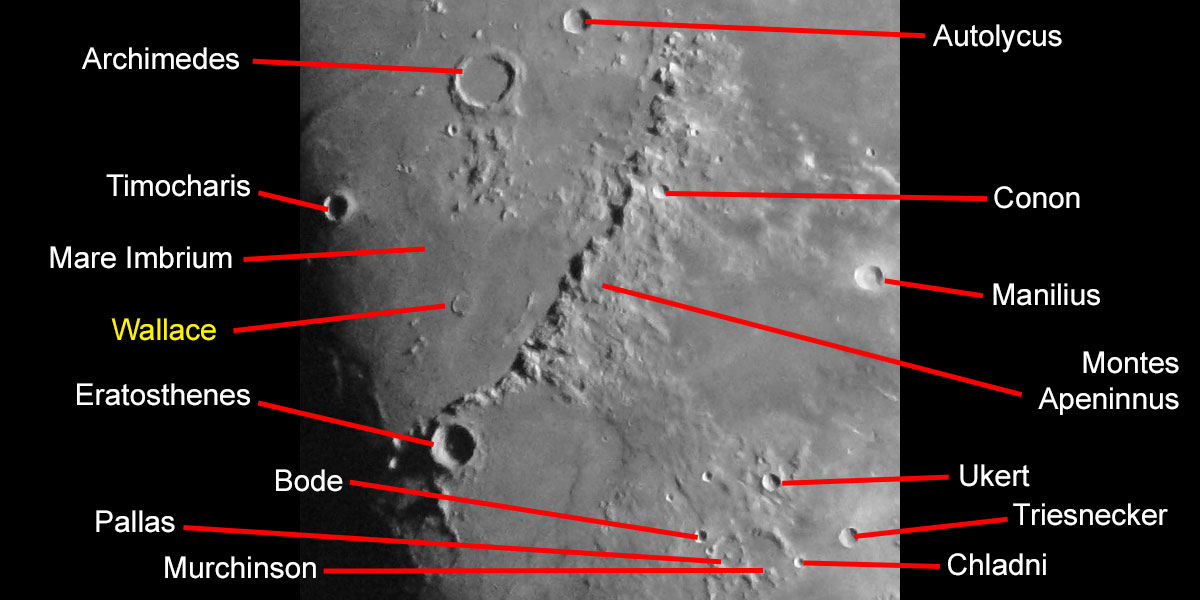 |
Photo data: March 25, 2018, Sky-Watcher Skymax-127 OTA, Sony RX100 M4 attached to the eyepiece
Rays
The following two sections show the southern part of the moon. The photos were taken on February 27-28, 2018 with different cameras and methods. Most prominent is the crater Tycho with rays emanating from it.
Helmet and Arrowhead (Red Spots)
In the southwestern area of the moon there are two formations, which received the unofficial names "helmet" and "arrowhead" and are classified under the term "red spots." They are single standing formations, which appear very bright. The "helmet" is a 40-50 km large bulge of the moon ground of volcanic origin with two mountain tops of 600 m and 1300 m height. The "arrowhead" (mons Hansteen) is a triangular plateau with a base of 20-30 km and a height of up to 1000 m; it is probably of volcanic origin as well.
Both formations can already be seen on the maps shown under "Rays" (when enlarged), but are not indicated there. Here is a more recent photograph showing and pointing to both formations:
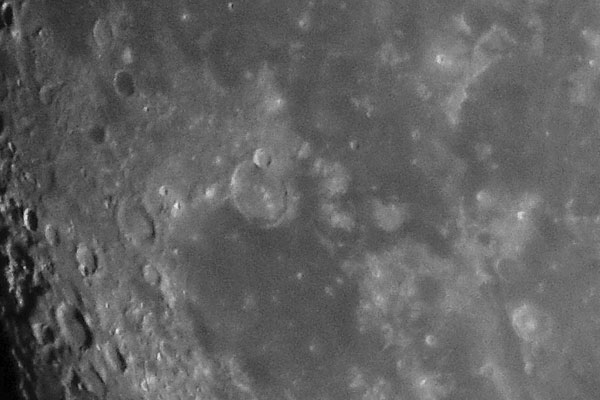 |
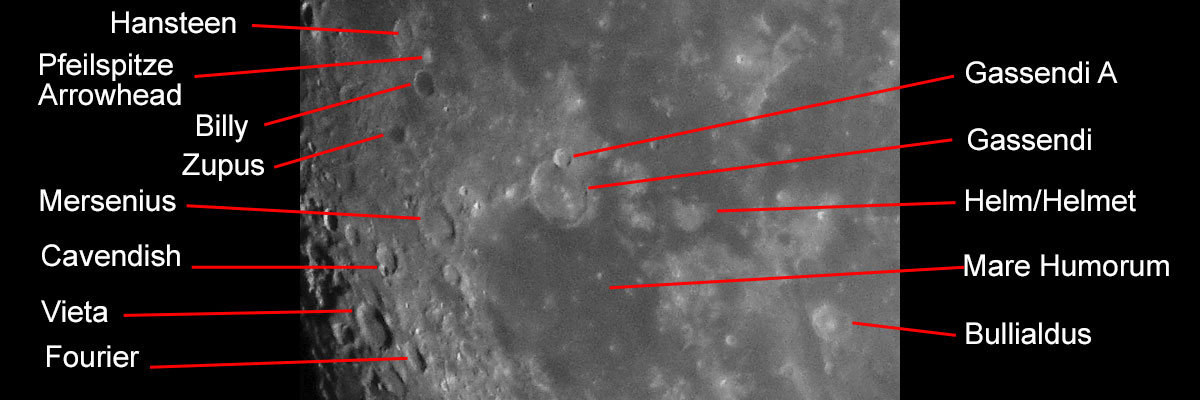 |
|
Photo data: November 20, 2018, Omegon PS 72/432 refractor, Sony RX100 M4 attached to the 32 mm eyepiece with 3 x focal extender |
||
Telephone Dial (Ring of Small Craters)
To the north of crater Piccolomini, you will find a ring of small craters called the "telephone dial."
 |
 |
|
 |
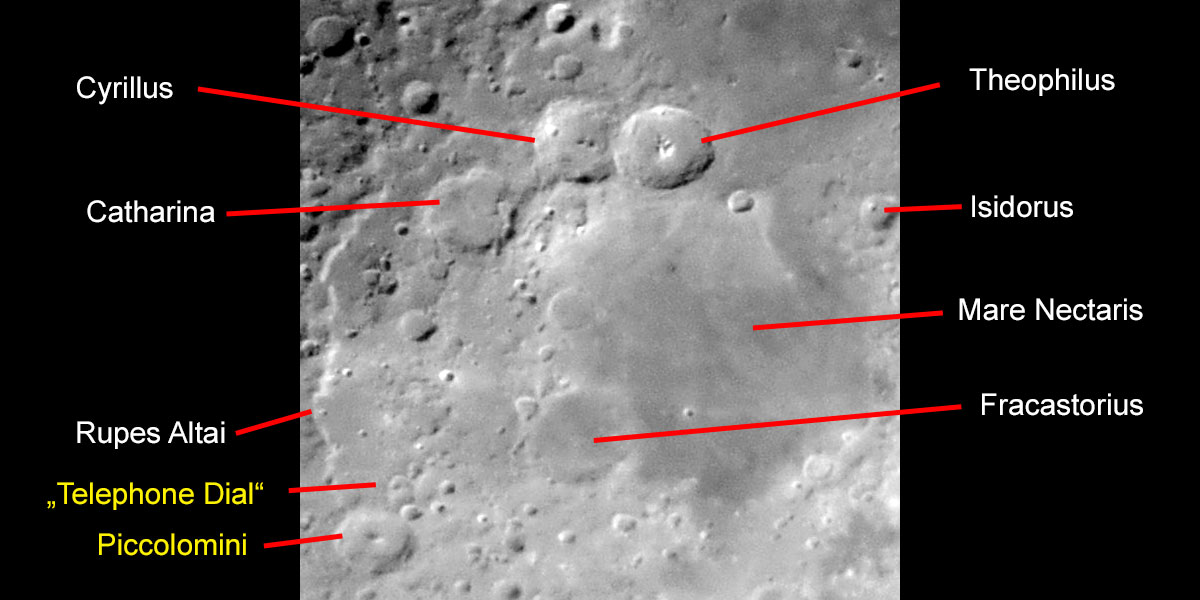 |
Photo data: April 2-3, 2017, Sky-Watcher Explorer 150PDS, Ricoh GR held to the 7 mm UWA eyepiece
References
- Mond (Wikipedia): de.wikipedia.org/wiki/Mond
- Moon (Wikipedia): en.wikipedia.org/wiki/Moon
- Lambert Spix (2013, 3. Auflage). moonscout - Mondmeere, Krater und Gebirge einfach finden und beobachten. Oculum-Verlag. ISBN 978-3-938469-58-3
- Lambert Spix & Frank Gasparini (2011, 1. Auflage). Der Moonhopper. Oculum-Verlag. ISBN 978-3-938469-54-5
- Ronald Stoyan, Hans-Georg Purucker (2013, 1. Auflage). Reiseatlas Mond. Oculum-Verlag. ISBN 978-3-938469-64-4
- Virtual Moon Atlas: ap-i.net/avl/en/start
| 18.03.2024 |
